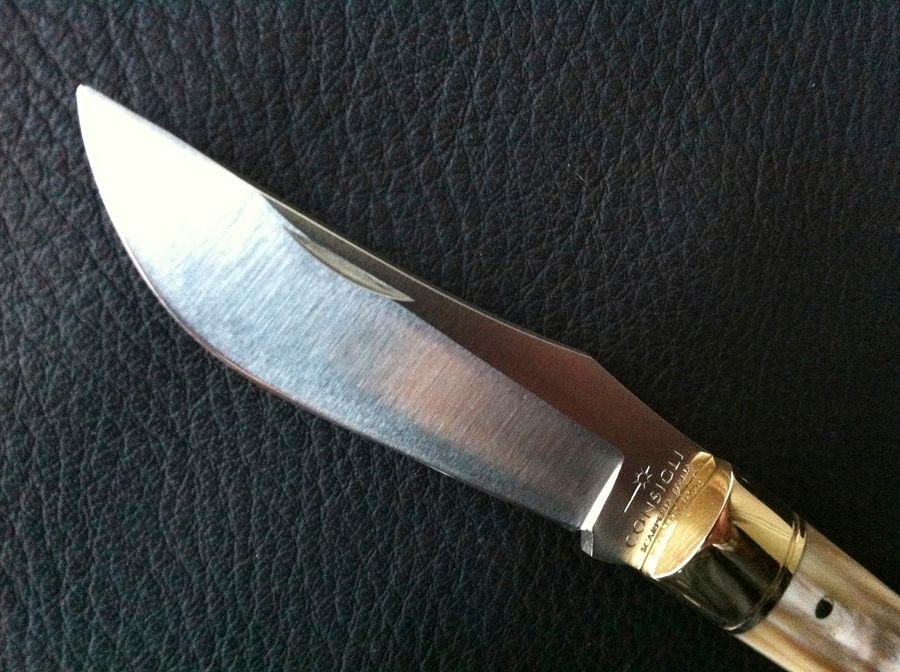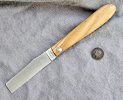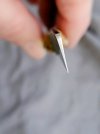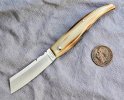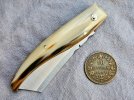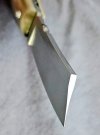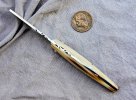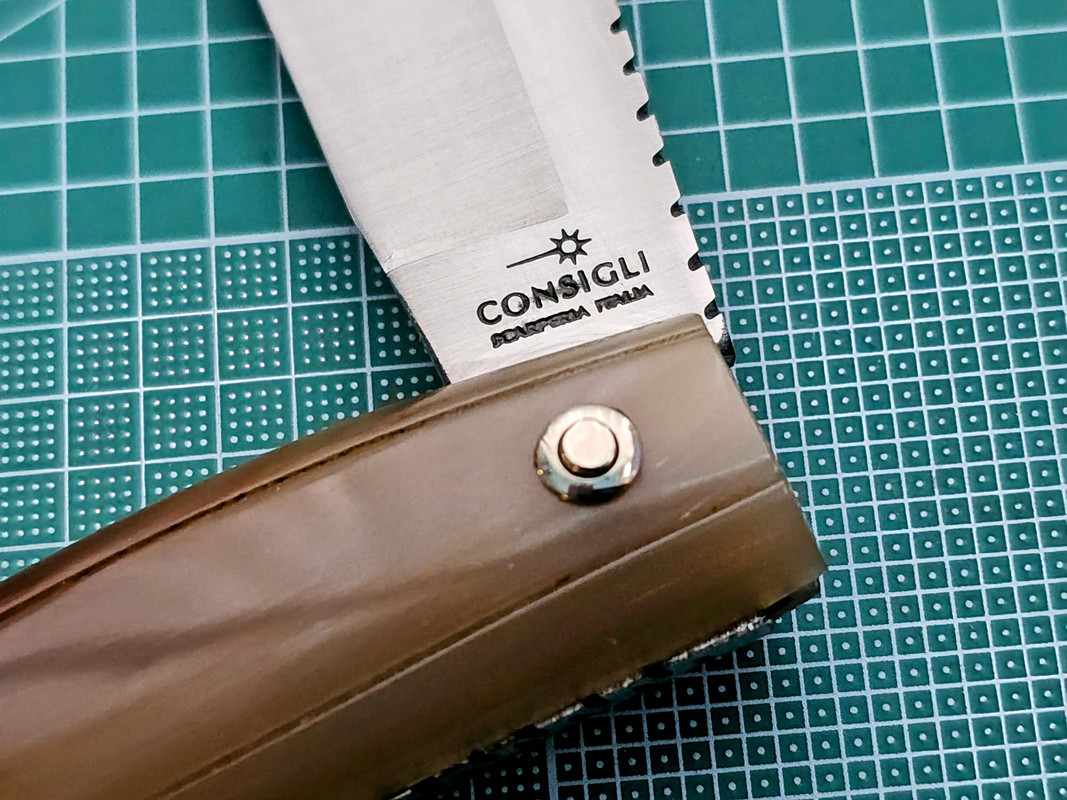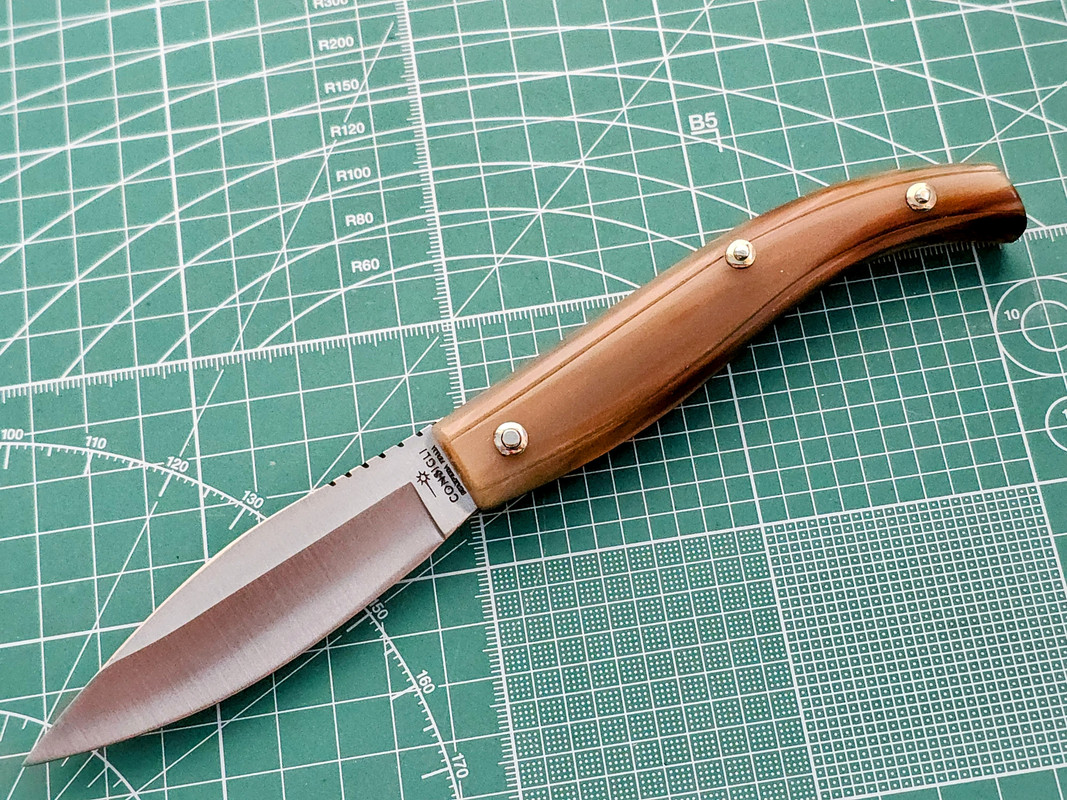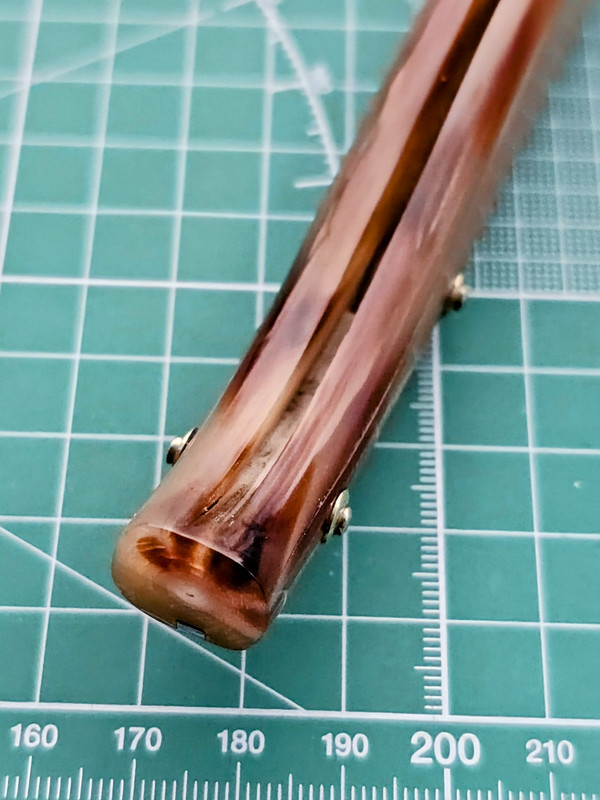-
The BladeForums.com 2024 Traditional Knife is available! Price is $250 ea (shipped within CONUS).
Order here: https://www.bladeforums.com/help/2024-traditional/
You are using an out of date browser. It may not display this or other websites correctly.
You should upgrade or use an alternative browser.
You should upgrade or use an alternative browser.
Italian Traditional Knives!!
- Thread starter waynorth
- Start date
draggat
Gold Member
- Joined
- Jul 26, 2010
- Messages
- 3,068
A variation of the Romano pattern, this one is called Zoomorfo, with an animal head carved into the solid buffalo horn handle
Although the blade on this particular knife is 4 1/8" long, it feels much smaller due to how slim and svelte it is.... a true gentleman's knife!
The lock is secure, but not so tight that a release ring is necessary.
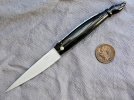

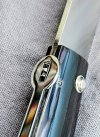
Although the blade on this particular knife is 4 1/8" long, it feels much smaller due to how slim and svelte it is.... a true gentleman's knife!
The lock is secure, but not so tight that a release ring is necessary.



btb01
Gold Member
- Joined
- Jul 26, 2008
- Messages
- 7,794
Mozzetta di Giolitti in olive wood. An interesting result from misguided laws. The coin is a bit old for the knife, which wasn't in production until at least 1908.
This one is approximately 3.5" closed.
View attachment 2152645View attachment 2152649View attachment 2152647
Certainly an unusual pattern, but I like the looks of it.
- Joined
- Dec 2, 2005
- Messages
- 71,133
Zuava?
Me tooCertainly an unusual pattern, but I like the looks of it.

I don't have many Italian knives, but here's a tiny Maserin Filiscjna. I'm afraid I know absolutely nothing about the pattern, or even what 'Filiscjna' means



Polishing Compound? Maybe this is what looks like silver inlay on the photos of my pescatore knive? In real it looks grey and I always thought it was some dirt left over from polishing. Is this common on italian knives?The Fontani Prussiano. Fontani has some great designs but I wish they would clean the polishing compound out.... 45 minutes removing crud, but it is worth it.
This one's a splinter picker!
View attachment 2116598View attachment 2116600View attachment 2116602
A Senese by Consigli
View attachment 2116601
Great looking knives!
The Zieg
Gold Member
- Joined
- Jan 31, 2002
- Messages
- 5,008
According to armasblancas.es,Zuava?
Me too
I don't have many Italian knives, but here's a tiny Maserin Filiscjna. I'm afraid I know absolutely nothing about the pattern, or even what 'Filiscjna' means


"El misterio del nombre ha sido revelado a la mayoría por el fallecido Luciano Salvatici , quien logró ponerse en contacto con un descendiente del fabricante.
El nombre "Filisjn" deriva del apodo de la rama de la familia del bisabuelo Giovanni Del Tin, quien construyó los primeros alrededor de 1927 hasta unos años antes de la guerra.
Desafortunadamente, el único hijo varón no volvió sobre los pasos de su padre, decretando así el final de la tradición del cuchillo "Del Tin" (aunque he visto por la red que existe una casa de armas blancas con ese nombre)."
So the most prominent pre-WWII maker of this pattern, Giovanni Del Tin, had the nickname "Flilisjn" (which to my eyes and ears may be a Slovenian spelling of "Philistine", or as we would say in English, "Palestinian"). Thus the pattern carries Del Tin's nickname. Apocryphal, but plausible.
Zieg
draggat
Gold Member
- Joined
- Jul 26, 2010
- Messages
- 3,068
Zuava?
Me too
I don't have many Italian knives, but here's a tiny Maserin Filiscjna. I'm afraid I know absolutely nothing about the pattern, or even what 'Filiscjna' means


A fantastic looking small knife! I haven't tried Maserin yet, how is their build quality?
I did a brief search because I was interested in knowing the history of the name as well. Your research was much better than mine..... all I found was that it was a term for a small pocket knife. Thanks!!According to armasblancas.es,
"El misterio del nombre ha sido revelado a la mayoría por el fallecido Luciano Salvatici , quien logró ponerse en contacto con un descendiente del fabricante.
El nombre "Filisjn" deriva del apodo de la rama de la familia del bisabuelo Giovanni Del Tin, quien construyó los primeros alrededor de 1927 hasta unos años antes de la guerra.
Desafortunadamente, el único hijo varón no volvió sobre los pasos de su padre, decretando así el final de la tradición del cuchillo "Del Tin" (aunque he visto por la red que existe una casa de armas blancas con ese nombre)."
So the most prominent pre-WWII maker of this pattern, Giovanni Del Tin, had the nickname "Flilisjn" (which to my eyes and ears may be a Slovenian spelling of "Philistine", or as we would say in English, "Palestinian"). Thus the pattern carries Del Tin's nickname. Apocryphal, but plausible.
Zieg
Polishing Compound? Maybe this is what looks like silver inlay on the photos of my pescatore knive? In real it looks grey and I always thought it was some dirt left over from polishing. Is this common on italian knives?
Great looking knives!
I had forgotten about your knife. Honestly, it probably isn't polishing compound, but rather it is likely some type of dye. I came to that assumption from looking into scrimshaw, which the grooves on our knives may have some similarity to. I would have left it, but it was uneven and missing in some areas, which didn't look so great. A toothbrush and mineral oil, followed by a flitz polish worked great!
- Joined
- Dec 2, 2005
- Messages
- 71,133
Thank you, it varies, I've had at least a dozen, and the Filiscjna is by far the best-made (ie VERY good), but it was also the most expensive I thinkA fantastic looking small knife! I haven't tried Maserin yet, how is their build quality?

This was my first Maserin I think


- Joined
- Dec 2, 2005
- Messages
- 71,133
Beautiful!The Rasolino is one of my favorite Italian patterns. Originally from Sicily, it predates the standard Mozzetta by many years.
This particular version sports a very stout spring as well.
View attachment 2160975View attachment 2160976View attachment 2160977View attachment 2160978
draggat
Gold Member
- Joined
- Jul 26, 2010
- Messages
- 3,068
The Tre Pianelle. I think this knife is a true test of the cutler's skill, seeing that the blade is hand ground. Maybe not the most efficient at cutting, but a unique pattern. I forgot to take a photo of the butt end of the handle, but like the other regional knives I've posted here, it is in fact one piece of horn.
The decorative button also sports their engraving of the flower of Florence, same as the one on their Fiorentino, a nice small detail.
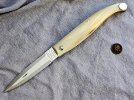
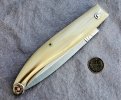
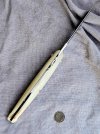
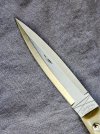
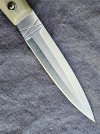
The decorative button also sports their engraving of the flower of Florence, same as the one on their Fiorentino, a nice small detail.





Hatchet_Jack
Basic Member
- Joined
- Sep 18, 2022
- Messages
- 3,013
The Tre Pianelle. I think this knife is a true test of the cutler's skill, seeing that the blade is hand ground. Maybe not the most efficient at cutting, but a unique pattern. I forgot to take a photo of the butt end of the handle, but like the other regional knives I've posted here, it is in fact one piece of horn.
The decorative button also sports their engraving of the flower of Florence, same as the one on their Fiorentino, a nice small detail.
View attachment 2184139View attachment 2184140View attachment 2184141View attachment 2184142View attachment 2184143
I could think of many descriptors for that knife but in a succinct one word way I’d say simply - Superb.
waynorth
Dealer / Materials Provider
- Joined
- Nov 19, 2005
- Messages
- 33,346
I feel very Sicilian carrying Rhidian's great reprise of the old, Italian sfilato in the middle, above!!I am going to try to gather up a sampling of Traditional Italian knives, with your help!!
These three are called Sfilatos (Italian plural, Sfilati). The first two come from major cutlery centers in Italy, and the third is a Canadian-made replica.
First, a Dark Horn example from Frosolone, The middle one is a very worn, light or undyed bone knife from Maniago, and the third is a Canadian made replica of the second knife!!
View attachment 1580949
And a few days before my birthday, 'lo and behold This came in the mail with Birthday Wishes!!!
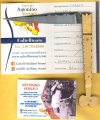
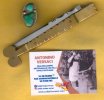
Made in Sicily, and named after a fish, it has a distinct flavor of the region!!!
Thanks J-M!!!
- Joined
- Apr 11, 2020
- Messages
- 103
How long are theyI am going to try to gather up a sampling of Traditional Italian knives, with your help!!
These three are called Sfilatos (Italian plural, Sfilati). The first two come from major cutlery centers in Italy, and the third is a Canadian-made replica.
First, a Dark Horn example from Frosolone, The middle one is a very worn, light or undyed bone knife from Maniago, and the third is a Canadian made replica of the second knife!!
View attachment 1580949
- Joined
- Apr 11, 2020
- Messages
- 103
What are the dimensionsImmigrants to America, Felix and Michael Mirando, with Domenic Fazzano founded Imperial Cutlery in 1917, after working for Empire Knife Co for several years. Their father, Cosimo Mirando came over from Frosolone, Italy to work with them in ensuing years. They had all practiced knifemaking throughout their lives in both countries!!
This Sfilato was made by Cosimo Mirando in Frosolone!!!
But it was in the Imperial Schrade collection, when it was sold, when Imperial Schrade closed in 2007. I feel fortunate to have found this speck of history of a great lineage of Cutlery!!View attachment 1581512View attachment 1581513View attachment 1581514
In the last pic you can see that the handles are Dark Horn!!


